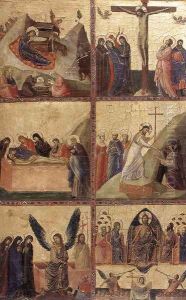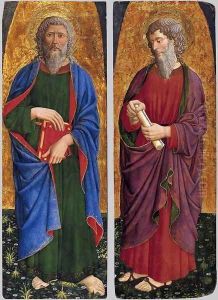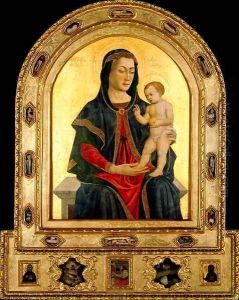Giovanni Da Rimini Paintings
Giovanni da Rimini was an Italian artist, active during the late 13th and early 14th centuries, a period that marks the transition from Medieval art to the beginnings of the Renaissance. Little is known about his life, and information about his activities is mainly derived from his surviving works and the historical context in which he worked. He is considered part of the Riminese school, a group of painters from the town of Rimini on the Adriatic coast, which was an important artistic center in the region of Emilia-Romagna.
The Riminese school is noted for its combination of Byzantine influence with the emerging Gothic style, which was spreading throughout Europe at the time. Giovanni da Rimini is attributed with having played a significant role in introducing the Gothic style to Italy. His work is characterized by its delicate figures, elegant lines, and attention to detail, features that anticipate the more naturalistic styles that would come to dominate Italian art in the following centuries.
One of his most famous works is a panel painting known as 'Scenes from the Lives of the Virgin and Other Saints' (c. 1300–1305), which is now in the collection of the National Gallery in London. This work displays a narrative sequence of events in a manner that was innovative for its time. The intricacy of the scenes and the emotional expressions of the figures reflect a departure from the more static and symbolic style typical of Byzantine art, moving towards the narrative and expressive potential that would be fully realized during the Renaissance.
Giovanni's death date is not precisely known, but his last documented work dates from 1309. Despite the lack of extensive records, his influence is recognized in the works of contemporaries and successors in the Riminese school. His legacy is seen as part of the foundation upon which later Renaissance masters, such as Giotto, would build. Giovanni da Rimini's contributions to the development of Italian art make him an important, if somewhat obscure, figure in the history of Western art.



